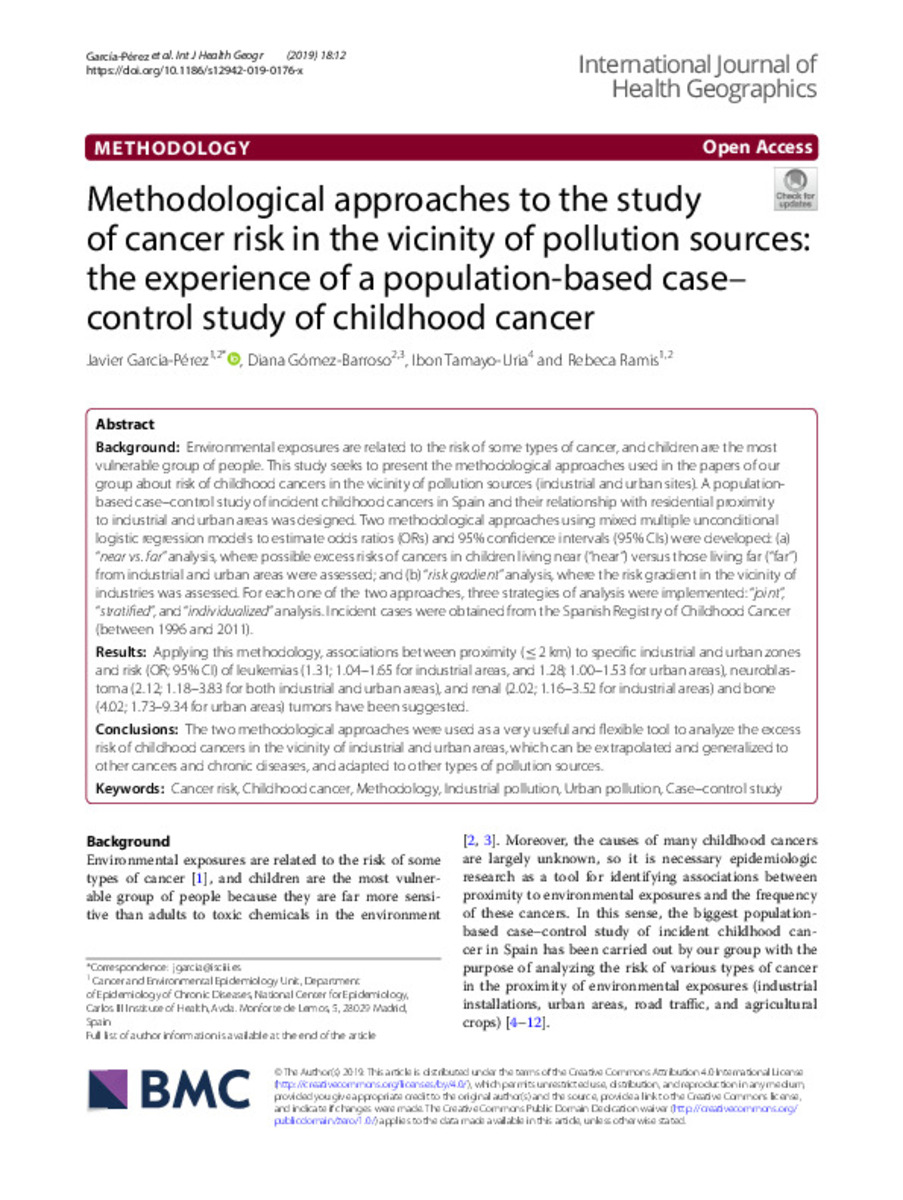Methodological approaches to the study of cancer risk in the vicinity of pollution sources: the experience of a population-based case–control study of childhood cancer
Palabras clave :
Materias Investigacion::Ciencias de la Salud::Oncología
Cancer risk
Childhood cancer
Methodology
Industrial pollution
Urban pollution
Case–control study
Fecha de publicación :
2019
Editorial :
Springer Science and Business Media LLC
Nota:
This article is distributed under the terms of the Creative Commons Attribution 4.0 International License (http://creativecommons.org/licenses/by/4.0/), which permits unrestricted use, distribution, and reproduction in any medium, provided you give appropriate credit to the original author(s) and the source, provide a link to the Creative Commons license, and indicate if changes were made. The Creative Commons Public Domain Dedication waiver (http://creativecommons.org/ publicdomain/zero/1.0/) applies to the data made available in this article, unless otherwise stated.
Cita:
García-Pérez, J. (Javier); Gómez-Barroso, D. (Diana); Tamayo-Uria, I. (Ibon); et al. "Methodological approaches to the study of cancer risk in the vicinity of pollution sources: the experience of a population-based case–control study of childhood cancer". International Journal of Health Geographics. 18 (12), 2019, 1 - 18
Aparece en las colecciones:
Estadísticas e impacto
0 citas en

0 citas en

Los ítems de Dadun están protegidos por copyright, con todos los derechos reservados, a menos que se indique lo contrario.







